GET YOUR KIDS OUTSIDE AND HAVE FUN WHILE LEARNING SURVIVAL
Well, we’re into summer. Right about now is when parents start to get desperate to get their children outside. This happens for one of two reasons. Either the parent is tired of the incessant, “I’m bored” coming from their mini-me, or they realize they’ve not so much as seen their child in the last three weeks because said youngster has been holed up in their room like a political prisoner, albeit one with high-speed internet.
Getting them outside to burn off some energy and get some sunshine is great. Doing so while also teaching them valuable survival skills is even better. You can kill two birds with one stone by coming up with your own summer camp sessions. These don’t require a big investment in supplies and most you can do even in urban areas, either in your backyard or at a local park.
LOST & FOUND
One of the first things you’ll want to make sure your child understands is what to do if they get turned around on the trail and are unsure of where they are or how to get back. S.T.O.P. is an acronym that stands for
S = Sit down and remain calm. Take some deep breaths.
T = Think about your situation. How did you get here? Where did you stray from the trail?
O = Observe your surroundings. Are there footprints you could follow? Any other clues as to where you are and how to get back to the trail?
P = Plan carefully what you are going to do.
The best solution in most cases is to just stay put and let searchers come to the child. It is vastly more difficult to find a moving target, particularly one that wanders aimlessly as they get more and more upset.

The Hug-A-Tree program started in California and was inspired by the search for a nine-year-old boy named Jimmy Beveridge. He became lost in February 1981 while on a camping trip with his brothers. It was a search that ended in tragedy, and a few of the people involved in the search later developed this program as a way to educate young people on how to stay safe outdoors. The gist of it is if you find yourself lost, hug a tree, and stay put until help arrives.
Every time your child hits the trail, they should have a loud whistle with them. The sound of a whistle blast carries much further than shouting, and it won’t tax the vocal cords. Teach them that the signal for help is three short blasts. I’m sure they’ll have no problem practicing this particular skill, either.
FIRE STARTING
This one is guaranteed to be a hit with kids of all ages. Being able to make a fire and keep it burning is a definite survival skill. Fire keeps us warm, dries us out, and can be used to call attention to our location. On top of that, there’s a psychological element at work. Getting a fire going, especially in challenging conditions, is a tremendous self-confidence boost.
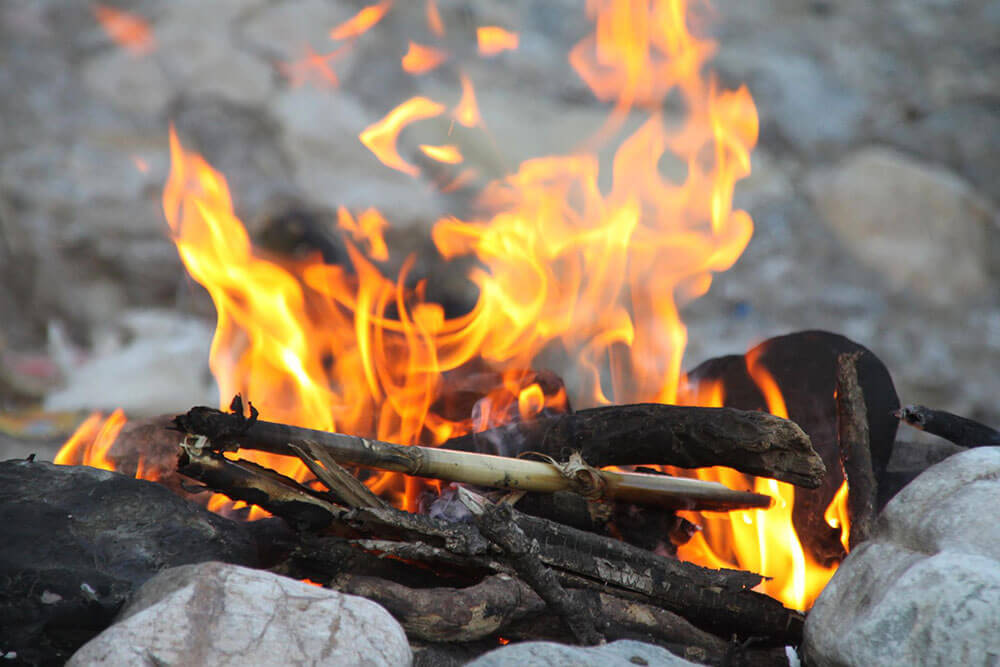
PIXABAY PHOTO
The simplest fire lay is probably the teepee. Make a small pile with your tinder, then build a teepee over it with thin kindling, nothing thicker than a pencil. Leave an opening that faces the direction the wind is blowing, so as to make sure plenty of air gets to the fire. Light the tinder and as the kindling catches, carefully add thicker and thicker wood until the fire is burning steadily.
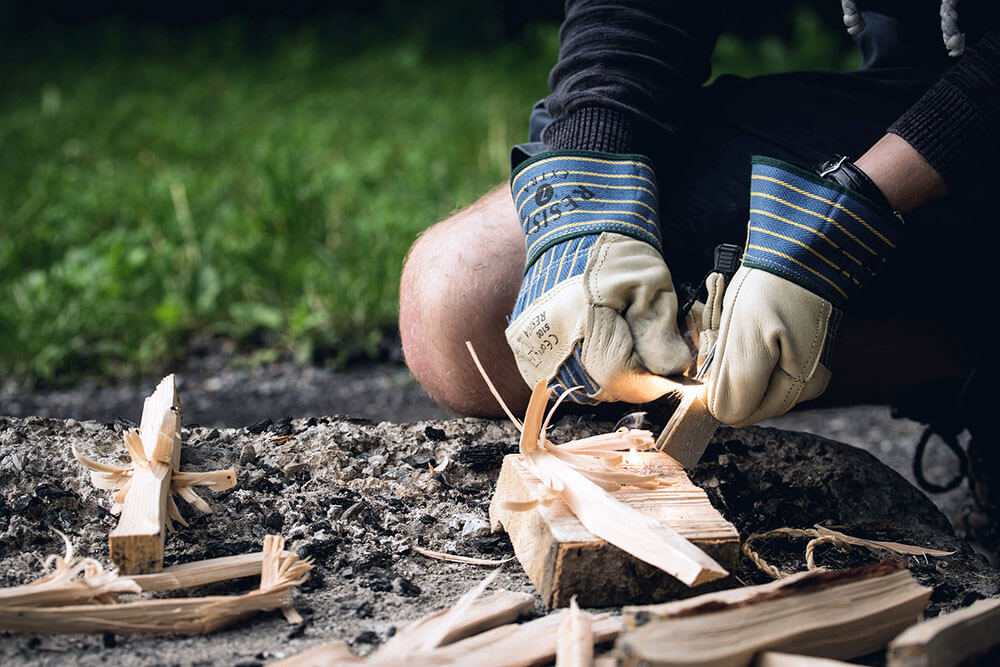
As for fire starters, there are several to choose from, of course. Small hands might struggle with disposable lighters, though a Bic would be the ideal starting place if they’re able to work it.
A ferrocerium rod and striker is great because it can be used in any weather conditions. I’m not fond of carrying matches except as a backup method, simply because they are a single-use strategy, and few people are able to reliably get a fire going every time with just one match.

Fire safety should also be stressed, such as making sure the area is clear of flammable material and avoiding building a fire that’s larger than necessary. If you’re practicing fire making in your backyard, you could provide a bonus lesson and let the kids practice using a fire extinguisher. P.A.S.S. is the memory aid here.
P = Pull the pin on the handle.
A = Aim the nozzle at the base of the fire
S = Squeeze the handle.
S = Sweep the nozzle back and forth.
OPEN FIRE COOKING
Since you have a fire going, let’s make lunch or dinner using it. After all, waste not, want not, right? There are a ton of different things you can make over a fire, but one of the easiest for beginners is the lowly hobo foil pouch.
“GETTING THEM OUTSIDE TO BURN OFF SOME ENERGY AND GET SOME SUNSHINE IS GREAT. DOING SO WHILE ALSO TEACHING THEM VALUABLE SKILLS IS EVEN BETTER.”
You can vary this according to individual tastes, but the basic recipe requires hamburger, onion, potato, carrot, and seasonings. Cube the potato and dice up the carrot and onion, then form small patties with the hamburger, just as though you were going to put them on the grill.
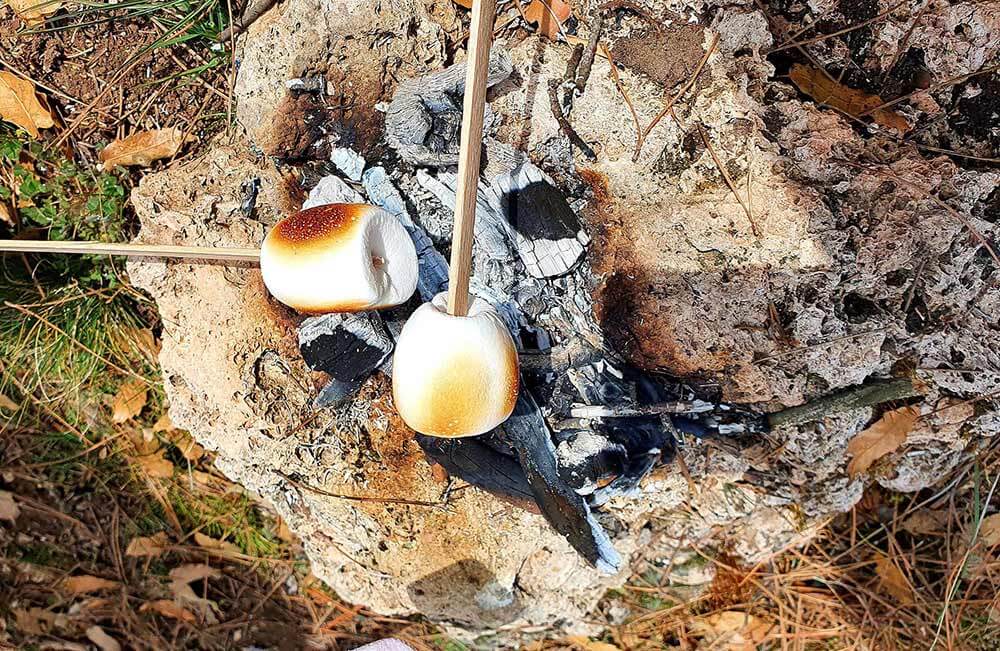
PIXABAY PHOTO
Tear off a sheet of aluminum foil that’s about 12-18 inches long. Spray one side with nonstick spray. Put the hamburger patty in the middle, and add salt and pepper as desired. Then, pile on the carrots, potato, and onion. Bring the long sides of the foil up and roll them together down to the food, then roll up each side, sealing the packet.
Place this on hot coals near the edge of the fire for about 15 minutes on a side. Remove from the coals and open carefully to avoid steam burns. Eat right from the foil.
ANIMAL TRACKS
Admittedly, this is easier in the winter just after a light snowfall, but it is certainly feasible to find and identify wild animal tracks in the summer. The easiest place to start is near water sources, such as ponds or creeks. Many animals start their day by drinking their fill, so there are likely to be tracks in those areas. Plus, the damp ground makes it easier to see the tracks.
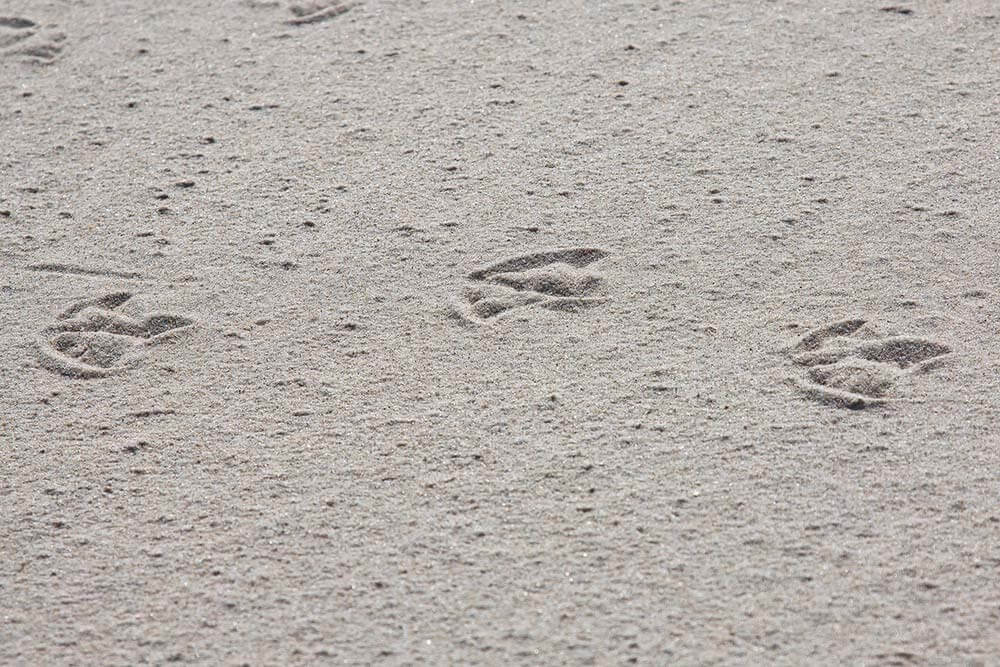
PIXABAY PHOTO

PIXABAY PHOTO
Bring along a reference book from your local library, and use it to help identify the different animals. See how far you can follow the tracks. Over time and with practice, you and your child will become adept at not just identifying some of the common critters, but you’ll start noticing tracks more often.
WILD EDIBLES
Don’t try to learn or teach dozens of these at once. It is easy to quickly become overwhelmed. Instead, concentrate on maybe four or five plants that are common in your area. Teach your child how to identify each one by several characteristics, such as number and shape of leaves, height and shape of stem, perhaps color or even smell of the plant.
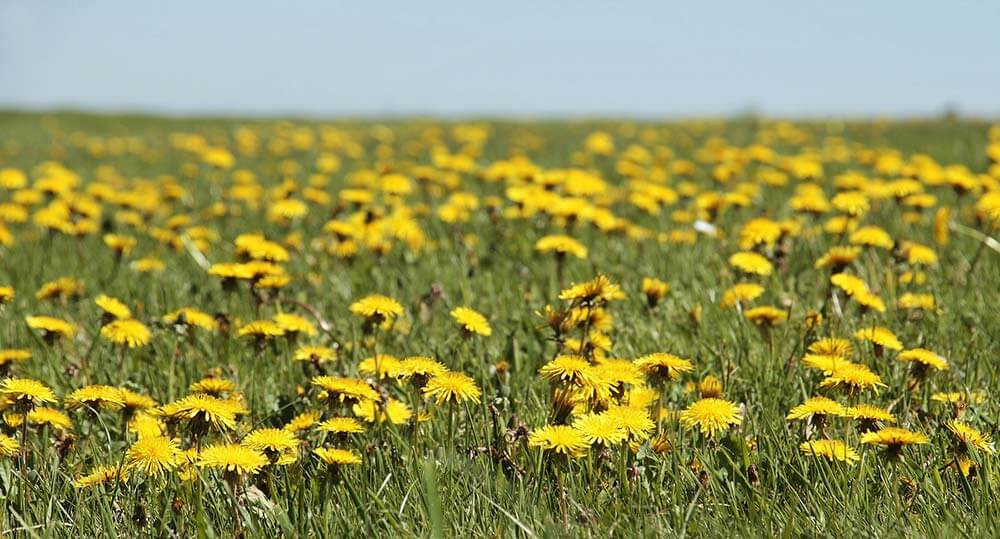
PIXABAY PHOTO
Some of the easy ones include dandelions and blackberries. Use guidebooks for your area for assistance as needed. Harvest some of these plants, and teach your child how to prepare them to eat. Not all plants are best raw.
KNIFE USE
Many parents ask how old a child should be before they’re given their first knife. It shouldn’t be based on how many years they’ve been around, but how mature they are as well as their dexterity level. If they are able to reliably follow directions and their hands are able to operate a small knife, give it a shot and see how they do. Age is just a number. Let’s face it, most of us probably know at least one person in their 40s who shouldn’t be allowed open access to anything more dangerous than a spoon.
Teach them about the Triangle of Death, though you don’t necessarily need to use that term if it would prove too frightening. The triangle is drawn by making a line from one knee to the other, up to the crotch, and back to the starting point. There are so many blood vessels in this area, it is important to steer clear of it when using a knife. Always cut away from the body and make sure nobody else is in the immediate vicinity and could end up cut if you lose control of the blade.
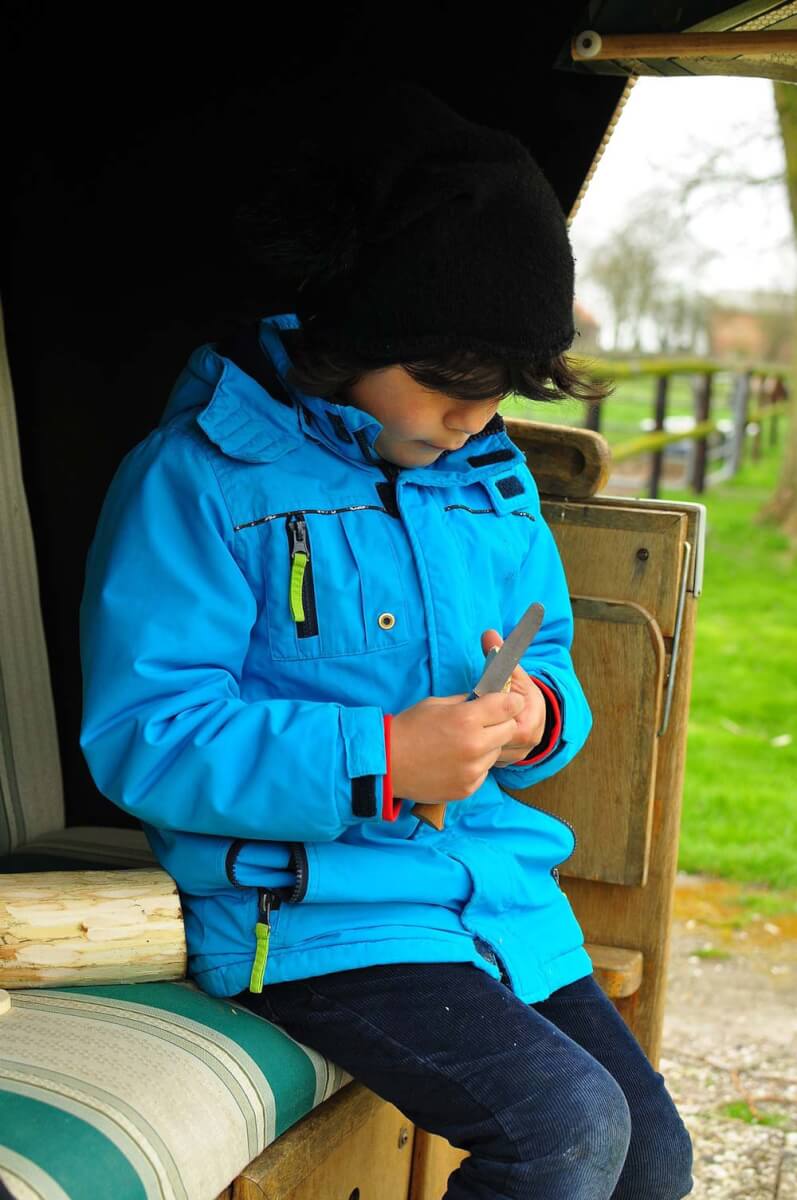
PIXABAY PHOTO
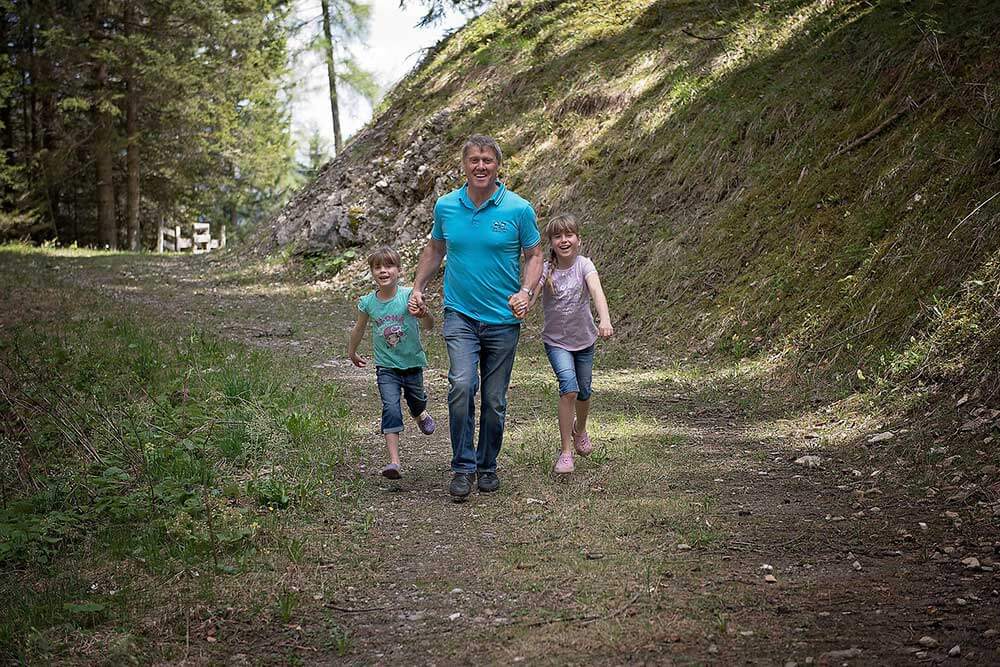
Show them different ways to hold and use the knife, such as standard grip, reverse grip, and push cuts where the thumb helps with leverage. Once they get a little experience, have them start making try sticks, where they utilize a number of different knife techniques on a single branch.
At the end of the day, show them how to properly sharpen and oil their knives so that they’re ready to go next time they head outdoors.
KEEP IT FUN
You don’t have to set these up as any sort of formal classes, though that can be a fun approach. You can just work them in here and there, as you visit parks or just cajole the kids to come outside for some fresh air. If you treat it like a fun time, they’ll start to see it that way as well. And the best learning happens when you’re having fun with it.
THE SECRET SIGNS OF NATURE
Wilderness instructor Craig Caudill recently came out with a new book titled The Secret Signs of Nature. It is geared for about ages 7-12, though there’s plenty that adults will find interesting as well. The idea behind the book is to teach young people how to observe the natural world and interpret what it is telling us.
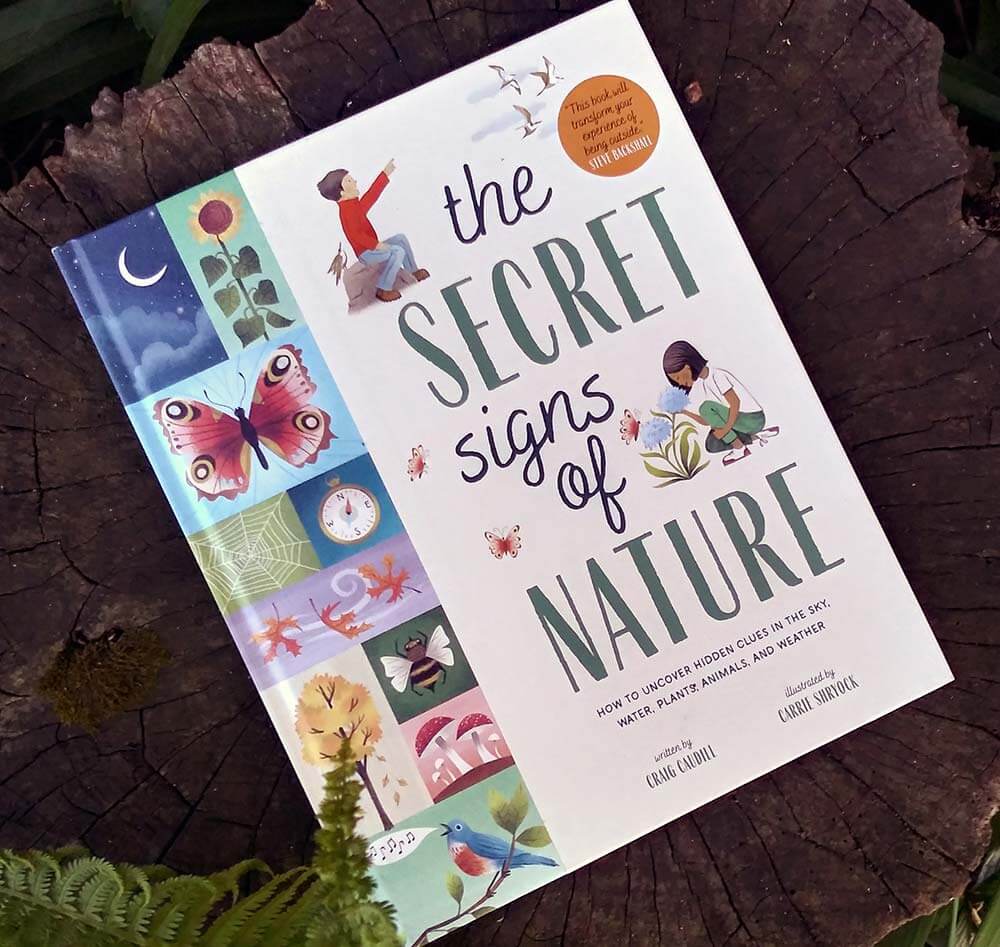
AUTHOR PHOTO
There are tips and tricks about everything from weather predictions to animal behavior. All of the information is presented in short, easy to digest segments scattered throughout the lavishly illustrated book. It is a great tool in helping children to start to really see the world around them.
WILDERNESS ADVENTURE CAMP
For those parents whose skills might be a bit rusty or who aren’t sure where to begin with some of this, author and instructor Frank Grindrod has written the perfect manual. His book, Wilderness Adventure Camp, covers a ton of information for beginners as well as the more experienced, with full-color photos and illustrations throughout.
Among the topics covered:
- Navigation
- Knot tying
- Setting up camp
- Finding and purifying water
- Bathroom use outdoors
A version of this article first appeared in the July 2022 issue of American Outdoor Guide Boundless.

